First published January 2022 | Words and photos by Vietnam Coracle | 4 comments
This post was last updated 3 years ago. Please check the comments section for possible updates, or read more on my Updates & Accuracy page.
Phu Quoc’s northern coast is by far the most attractive, peaceful, naturally striking and least developed part of the entire island. Along the northern bays, there are no hotels, giant construction projects, burger joints, or backpacker bars. Instead, there’s acres of dense jungle rolling down steep hillsides right to the water’s edge, where seams of white sand lie totally empty and the sea is calm, clear, shallow and turquoise and the sun sets between the Cambodian islands in the Gulf of Thailand. This is what most people want Phu Quoc to be – a deserted, lush, tropical island fringed by sandy beaches and lapped by calm seas – and yet most people don’t experience it, because they don’t visit the northern bays and they don’t camp. Sleeping out on the sands of the northern beaches is a real adventure and an experience that will stay with you for a long time. Do it now, while you still can, and before everyone else gets here.
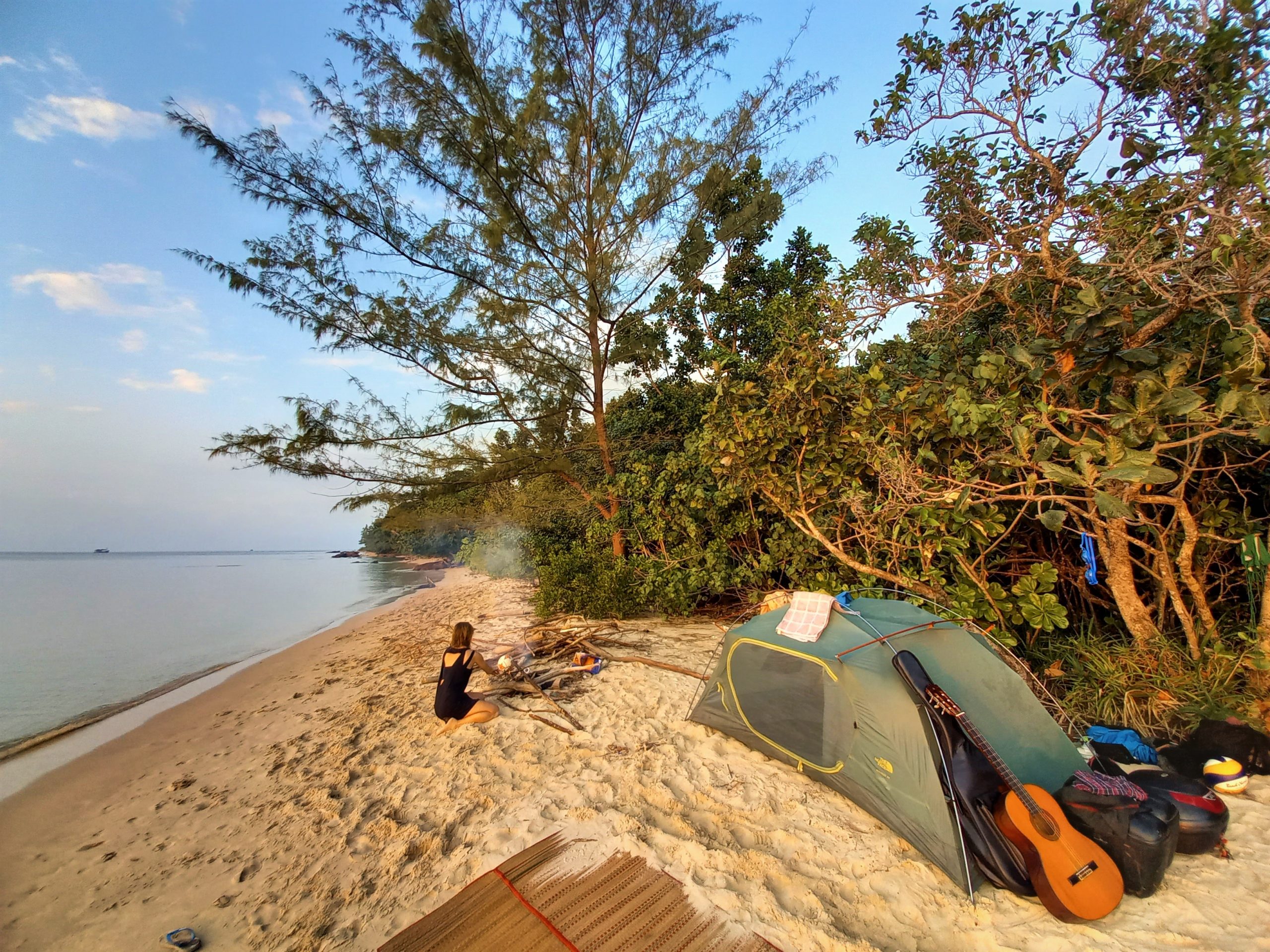
[Back Top]
CAMPING ON DRAGON BEACH & NORTHERN BAYS
Where & How to Camp on the Northern Coast
In this guide, I’ve focused on camping on four northern beaches (Dragon Beach, Rạch Vẹm, Rạch Tràm and Bãi Thơm). I’ve written an introduction to each beach and created an annotated camping map of the north. In most cases, the camping locations in this guide require you to bring your own camping equipment, but I’ve also included a couple of spots on Bãi Thơm where you can either rent tents or stay in rustic beach shacks. Ideally, the beaches are reached by motorbike (easy to rent on the island). The best months for camping are the Southern Dry Season (November/December to April/May), when weather and sea conditions are ideal. Any other time of year, you risk being rained off by the monsoon. I’ve also written an Equipment check-list and Safety section.

CONTENTS:
*Safety & Responsibility: Wild camping in Vietnam is one of the most memorable travel experiences you can have. However, campers should do so safely & responsibly, taking care not to harm the natural environment or disturb private property, and fully aware of the risks involved. Please read the Safety & Hazards section before deciding to camp.

MAP:
Camping on Dragon Beach & the Northern Bays | Phu Quoc Island
View LARGER MAP
*Please Support My Site: I never receive payment for anything I write: all my content is free to read and independently financed. There’s no sponsored content whatsoever. If you like this guide, please consider making a donation or becoming a patron. Thank you, Tom


Dragon Beach:
[MAP]
Only accessible by boat, Dragon Beach (Bãi Biển Hàm Rồng) is a long, narrow lip of white sand sliding into shallow, turquoise water backed by dense jungle with dramatic hills rising behind. There’s no development here whatsoever. It’s beautiful. The stunning 10-minute boat ride can be arranged from any of the seafood restaurants on neighbouring Rạch Vẹm beach, just to the south. I recommend taking the boat from Ngàn Sao Quán right at the northern end of Rạch Vẹm beach, because the family are friendly, the boat is a colourful, pretty little traditional fishing vessel, and the price is reasonable: 100,000vnd per person for a group of at least four people. You will need to politely negotiate first, and you can also park your motorbike there overnight. Throw all your camping gear onto the boat and either arrange a time to be collected the next day or take the family’s phone number and call them whenever you want to be picked up.
Dragon Beach has two rickety wooden piers at either end, but the boat can drop you anywhere you like along the sand. The northern end is popular with day-trippers and it looks like there’s going to be a small homestay-style accommodation there, so if you want a peaceful, quiet and isolated campsite, stick to the southern end. Not far from the southern pier, a clearing in the jungle looks as though it’s an abandoned ranger station or picnic site: ideal for a campground. Set back from the beach and raised a metre or so above the sea, the sandy clearing is in the shade of large tropical trees and looks directly west for amazing sunset views. Out in the distance, you can see the jungle-covered hills and lights of Gành Dầu, the northwestern-most point of Phu Quoc, beyond which the Cambodian islands and mainland are clearly visible. If you choose to set up camp on the beach itself, beware that the tide comes in so much that only a narrow slither of sand remains above the waterline. (You should be able to discern the hide-tide mark on the sand.) You could visit Dragon Beach as a day trip, but camping here is a much richer experience: the place really gets under your skin and stays with you. It’s magical.

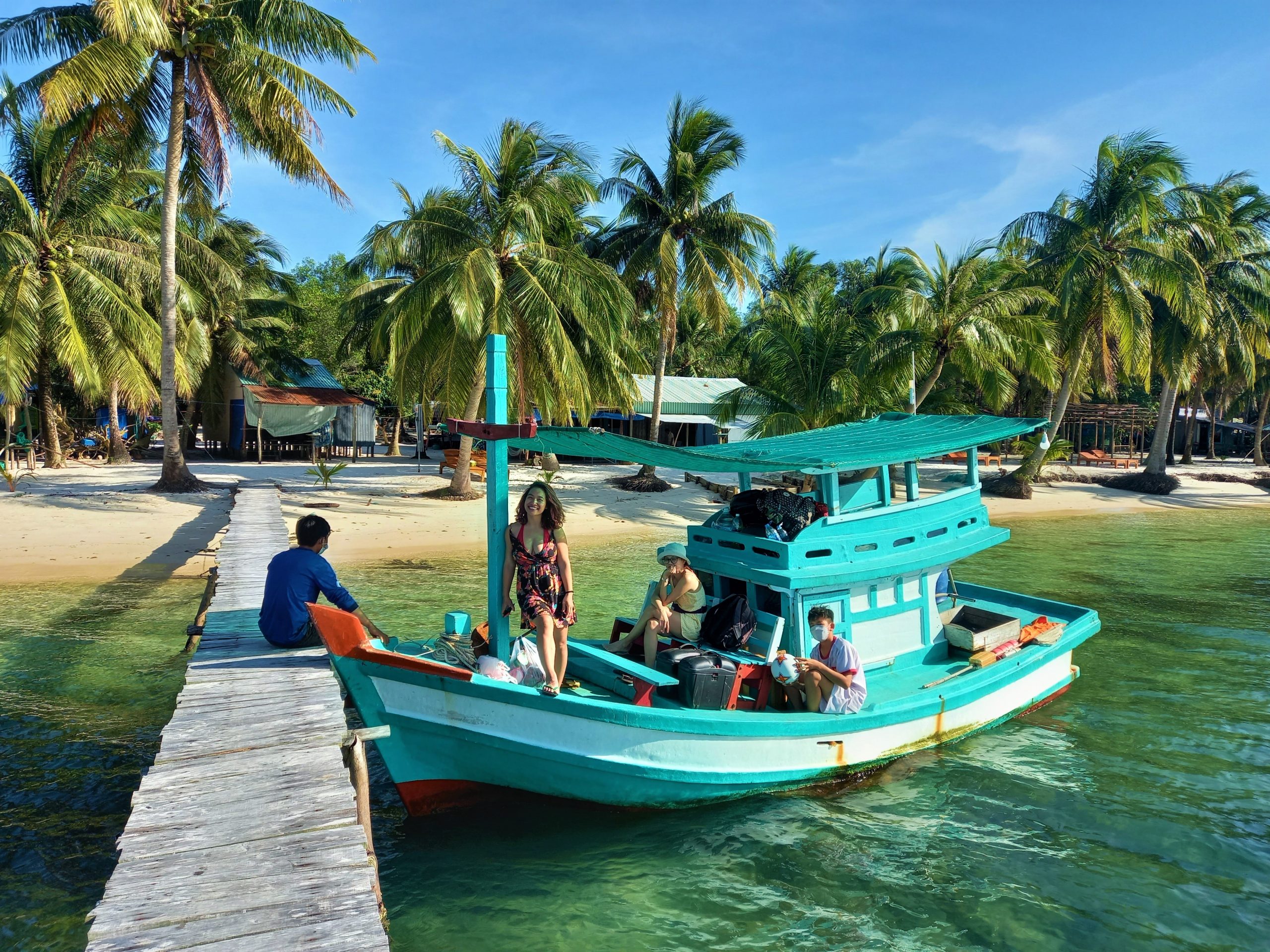
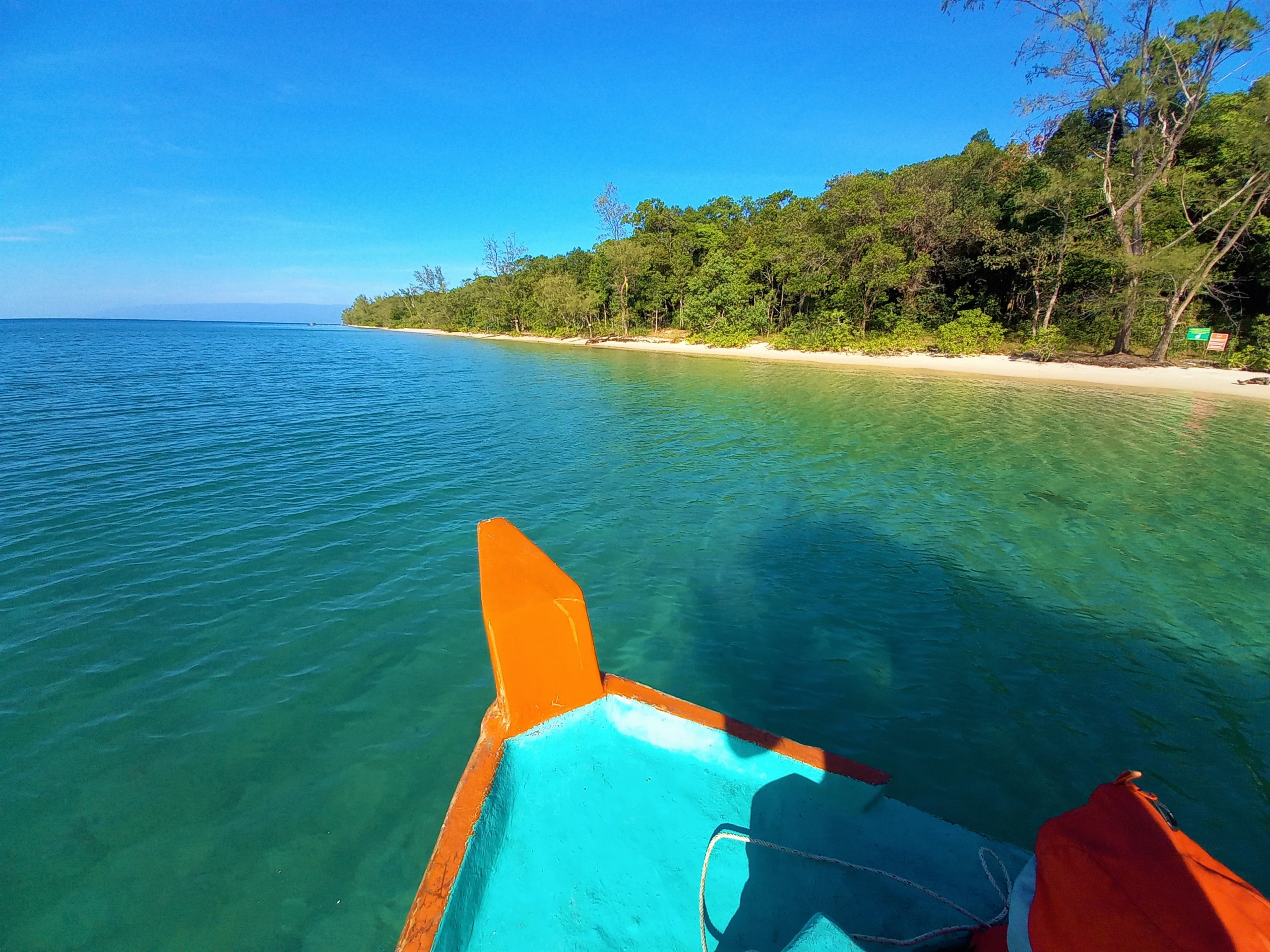
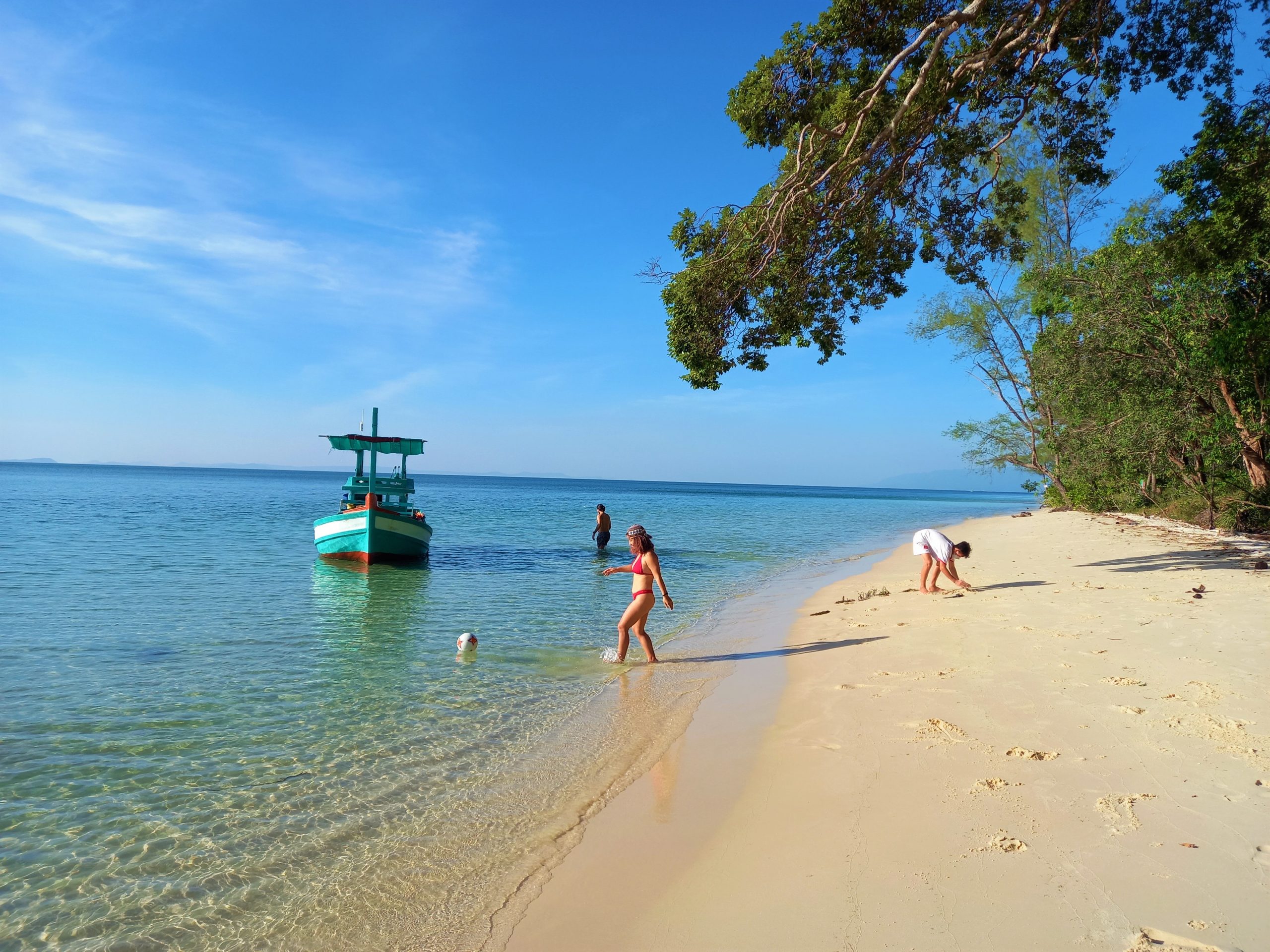

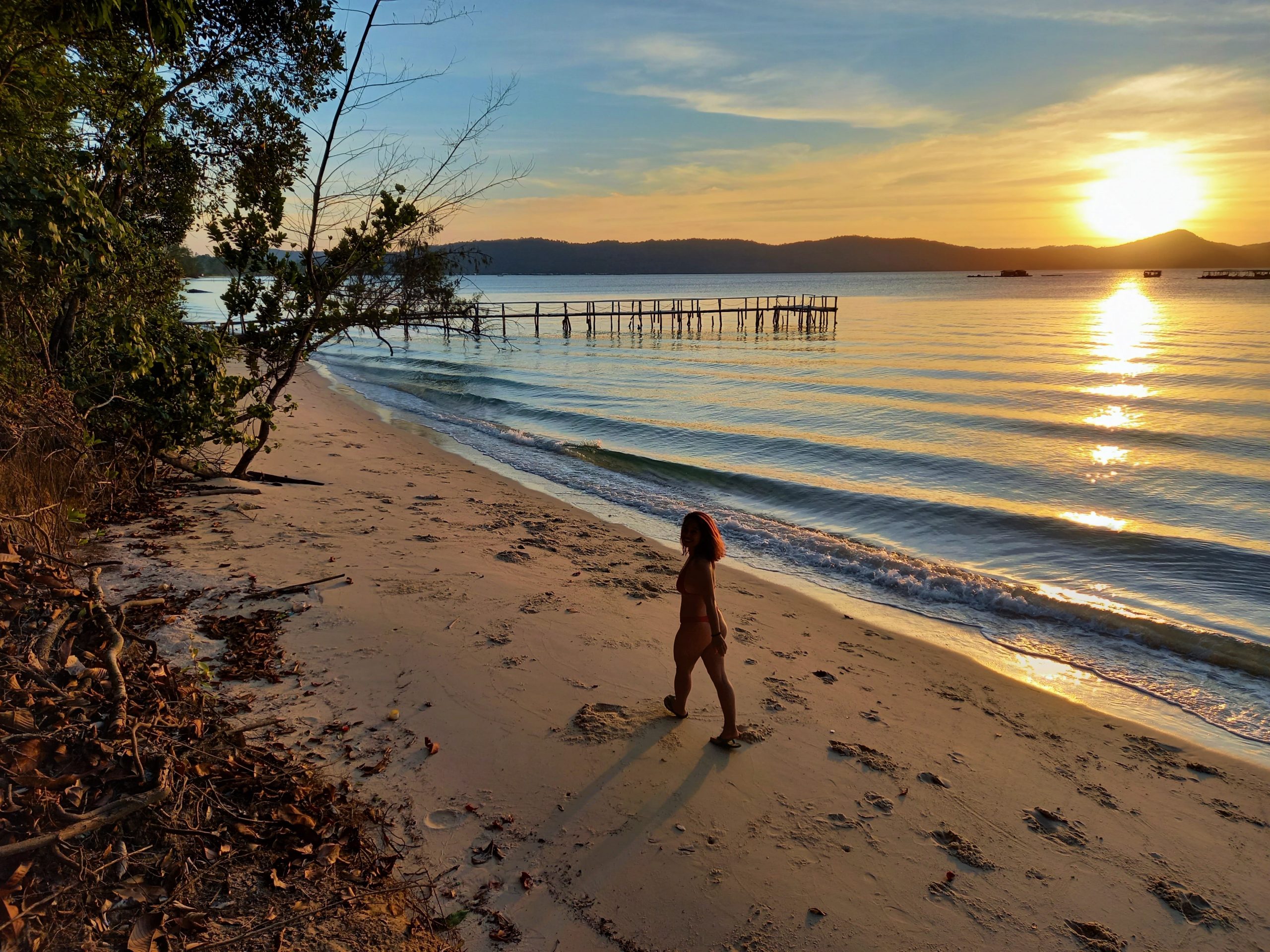
Rạch Vẹm Beach:
[MAP]
Accessed via a long dirt road, Rạch Vẹm is a rustic, largely undeveloped white sand beach fringed by leaning coconut palms and shallow water, beneath which lie hundreds of red starfish (hence its popular name: Starfish Beach). The small fishing hamlet here has been luring day-trippers to the beach with excellent local seafood restaurants housed in gazebos above the sea, reached via long, wooden-plank walkways. The southern end of the beach is quite unattractive; the central section is pretty but also increasingly touristy, including kitsch props for social media posing; but the northern end is still quiet, beautiful and charming. After crossing the wooden bridge, ride as far north as you can along the sandy path until you reach Ngàn Sao Quán (Thousand Stars Shack). This is not only the most attractive beachfront on Rạch Vẹm but also a great seafood restaurant, point of departure for the boat to Dragon Beach, and a potential campsite. To camp out on the sand here – where there are deck chairs and a couple of rudimentary swings hanging from casuarina trees – you need to ask permission from the friendly family at Ngàn Sao Quán. Alternatively, you could park your motorbike here overnight (offering the family a small fee in exchange) and then walk a few hundred metres due north along the beach where you’ll find some more good potential campsites.
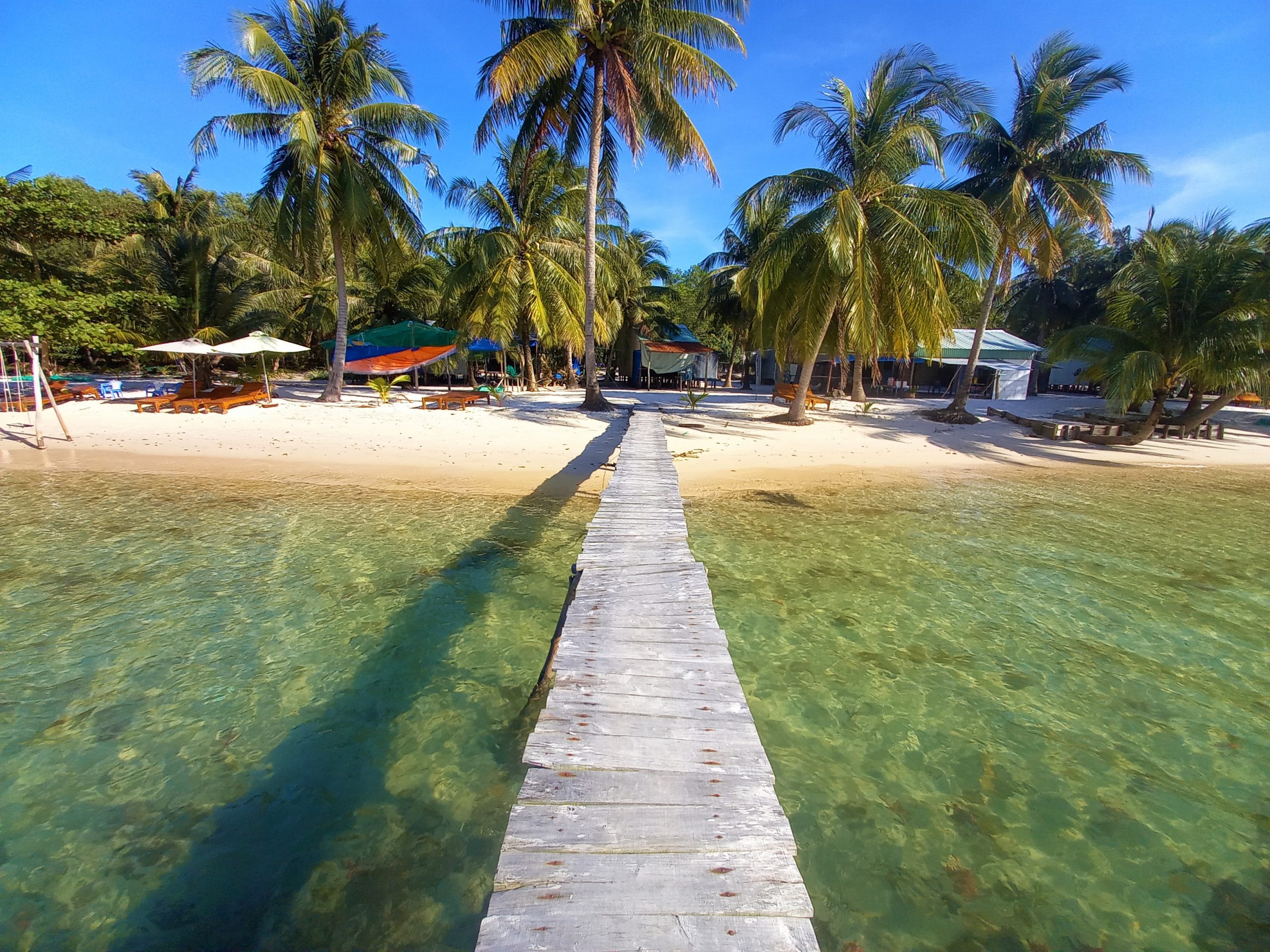
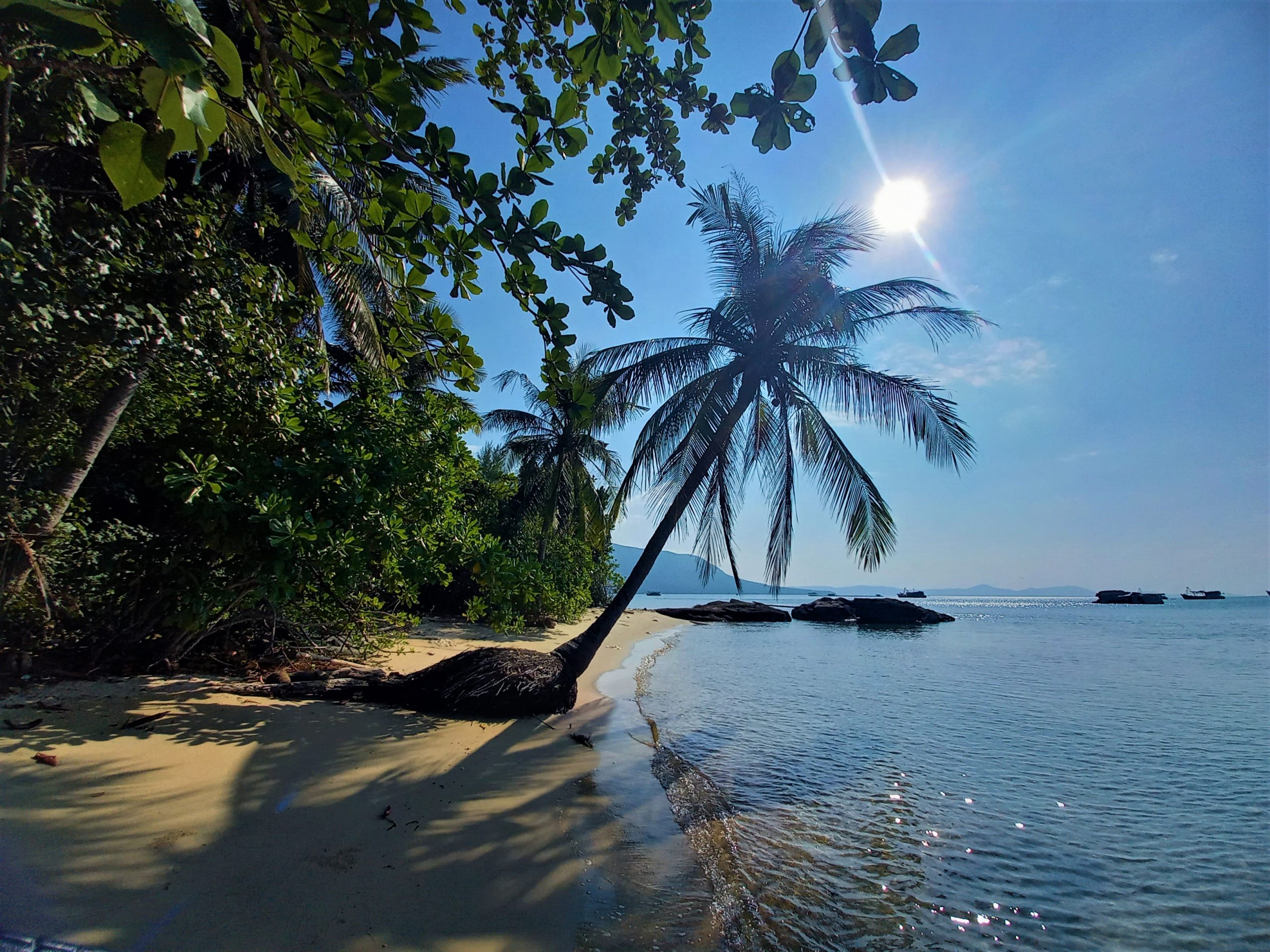

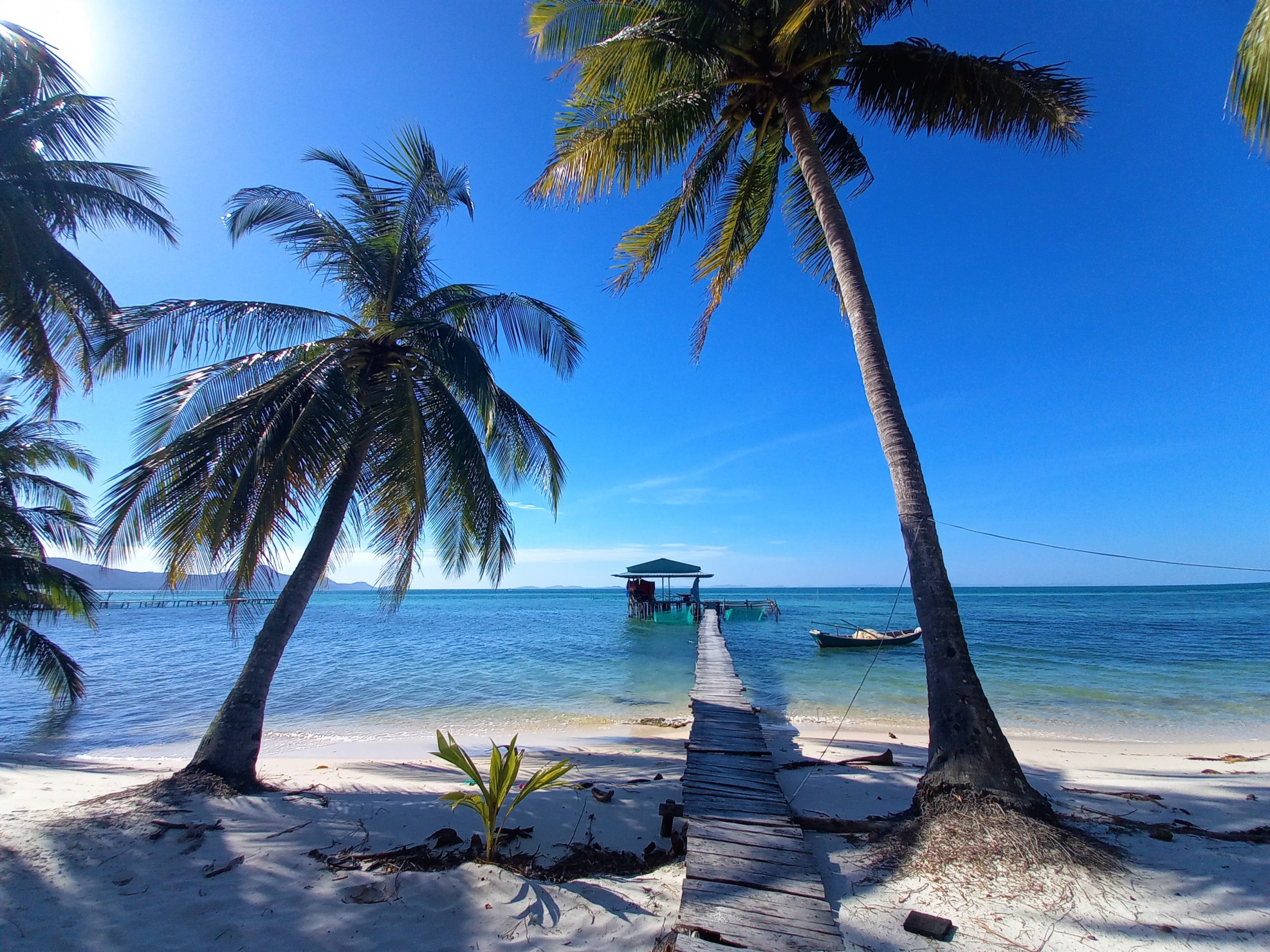
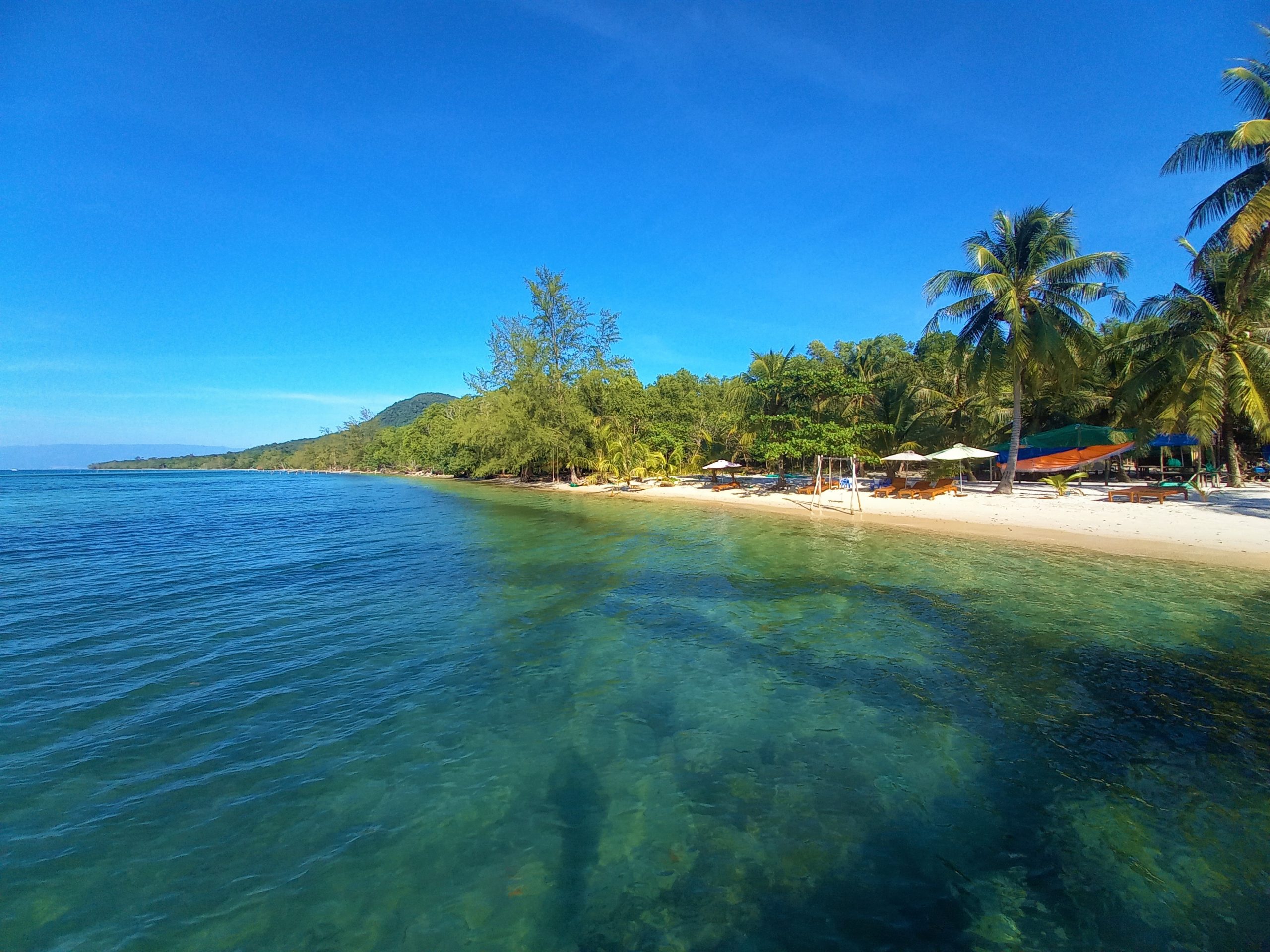
Rạch Tràm Beach:
[MAP]
The most northerly sandy beach on the island, Rạch Tràm is one of the few areas on Phu Quoc that remains totally undeveloped. A wide, newly paved road leads all the way to within a hundred metres of the bay. The southern section is home to Rạch Tràm fishing hamlet and the beach is not very attractive, but the northern reaches are glorious. A short dirt road leads through the trees and out to the white sands and calm shallow water, just south of the Biên Phòng border patrol station. From here, you can ride a little way due north on a sandy path near the sea until it meets a stream. Park your motorbike here and carry your camping gear north along the beach until you find a suitable campsite. Studded with palm trees, behind which dense jungle grows all the way up a steep hillside, the beach is long, beautiful and empty. The water is calm, shallow and clear with several boulders in the bay to swim out to and jump off. Cambodia provides a dramatic backdrop to the sensational sunsets you get here. When choosing a campsite, be careful not to pitch your tent too close to the sea, because the tide comes in a long way during the night.
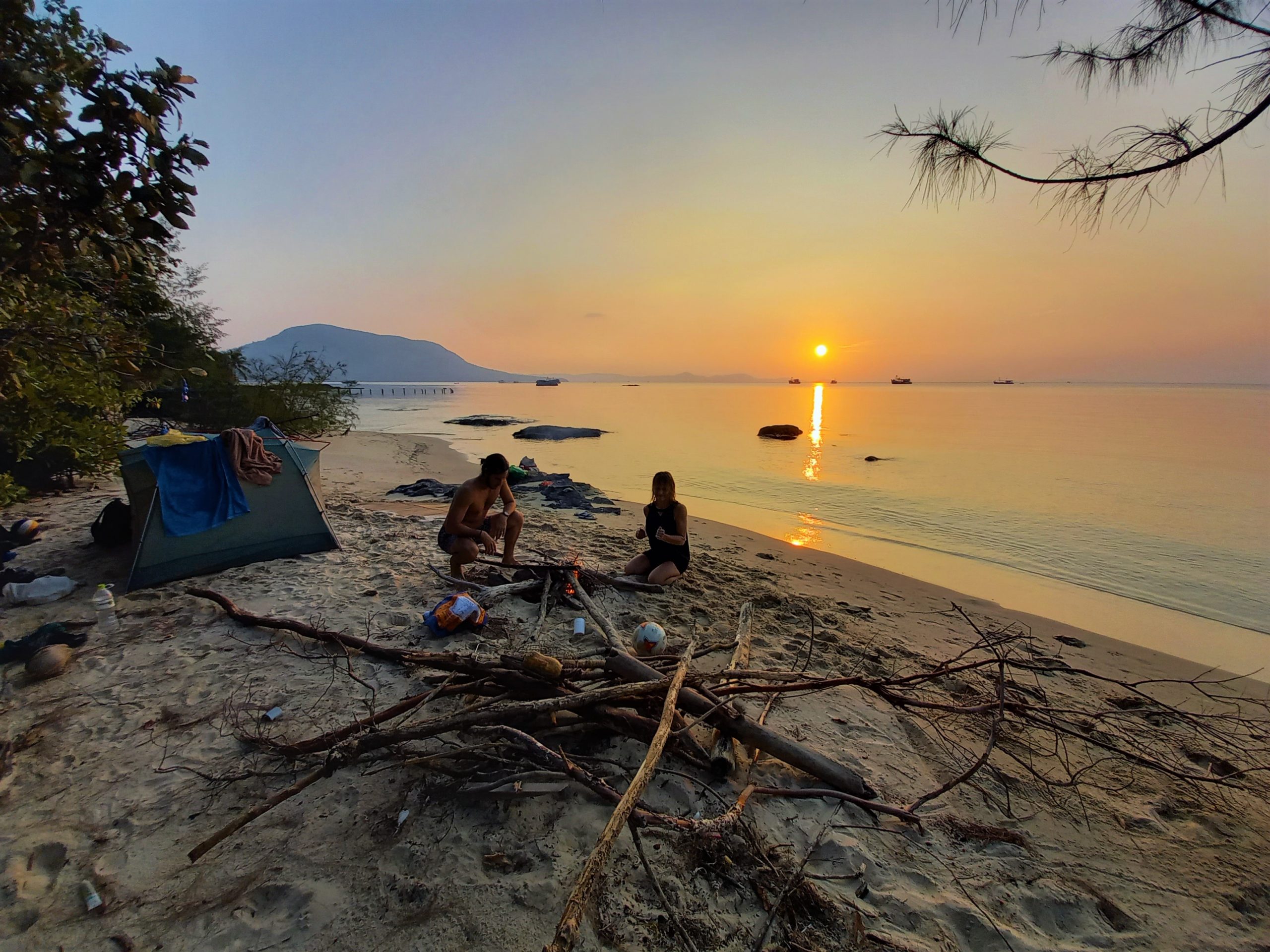
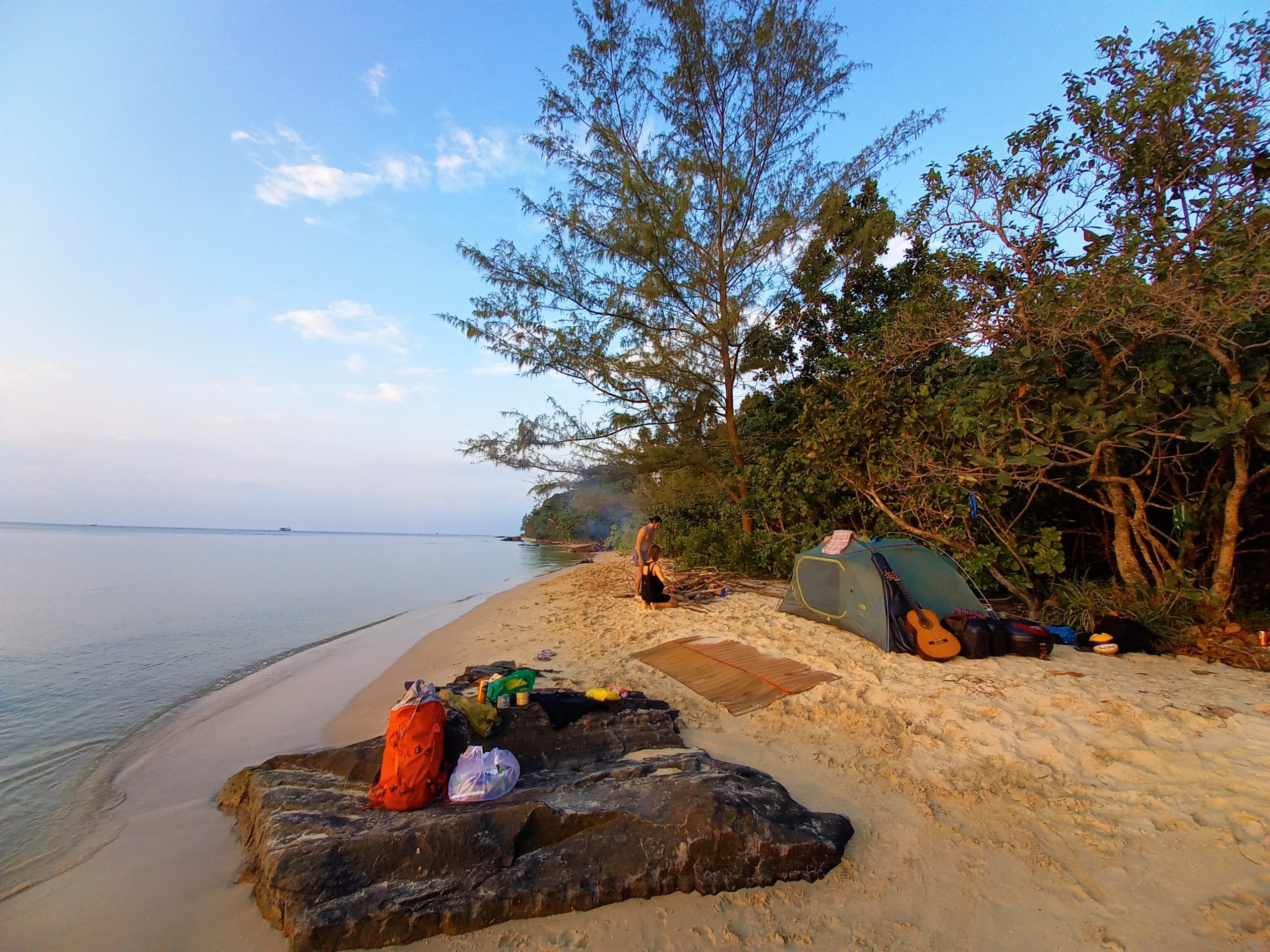
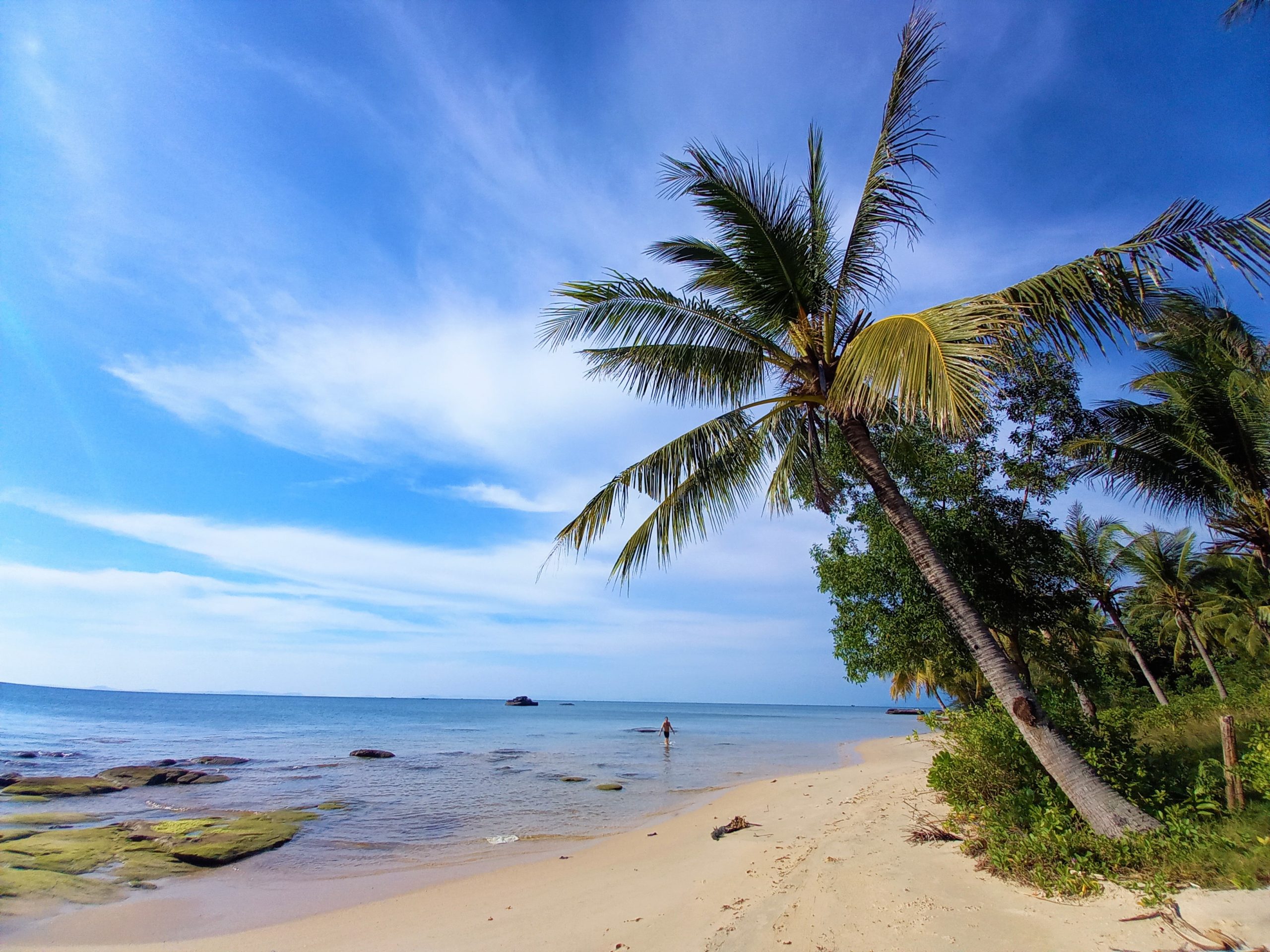
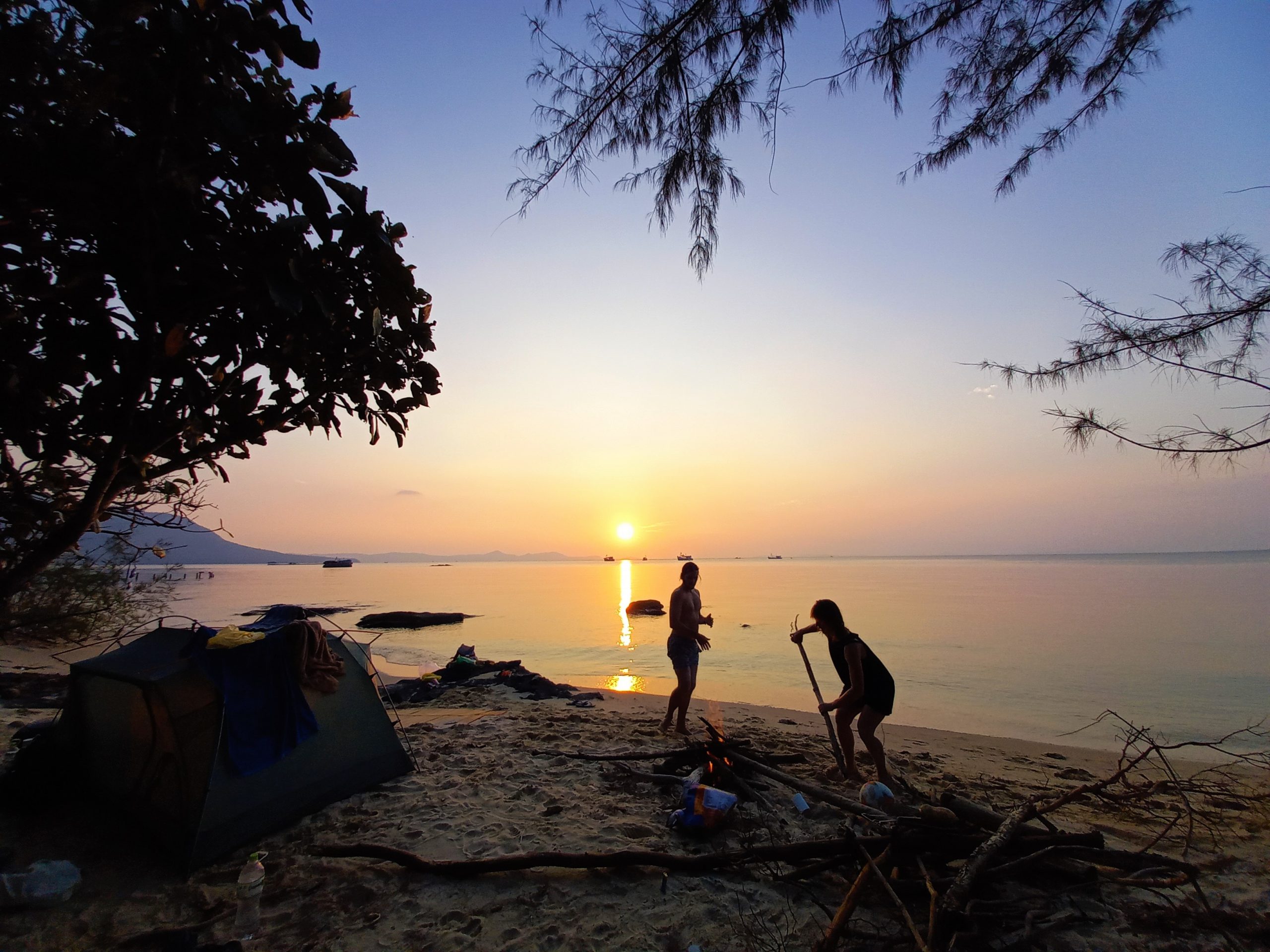
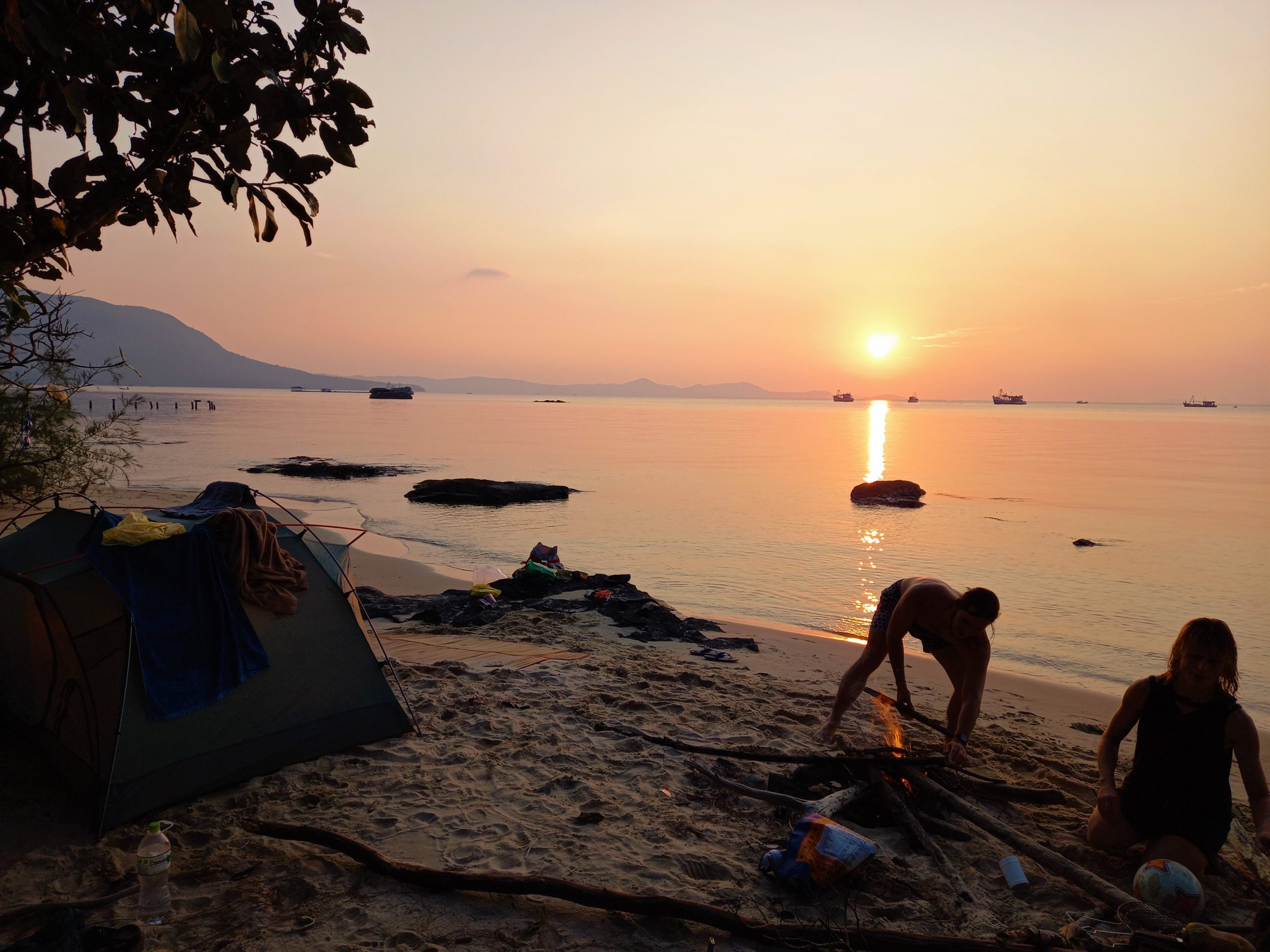
Bãi Thơm Beach:
[MAP]
Stretching for several kilometres along the northeastern-most coast of Phu Quoc, Bãi Thơm beach is a beguiling mix of shallow, tidal bays, inlets, and tree-lined beaches. The water is very shallow and not as blue as other northern bays, nor is the sand as fine and white, but Bãi Thơm has plenty of charm and an appealing laid-back, sleepy charm. What’s more, although the road along much of Bãi Thơm is paved, the area remains very sparsely populated and undeveloped. Just north of Bãi Thơm village, a long, sandy beach can be accessed via some small dirt roads. Find yourself a patch of sand beneath the whispering casuarina trees and make camp. Alternatively, there are several inexpensive and informal beach homestay-style accommodations in the village and south along the road, offering the choice of cheap beach shacks, tent rental or make-your-own-camp on their property for a small fee. One such place is Luna Beach, a lovely spot run by a warm and welcoming northern family; or try Bãi Thơm Retreat further south, and several other places around Hòn Một Islet. This area is ripe for exploration and perfect for independent travellers on a budget and with a tent. Explore and enjoy. (Most places along this coast, including Luna and Thơm Retreat, also serve excellent, fresh seafood.)
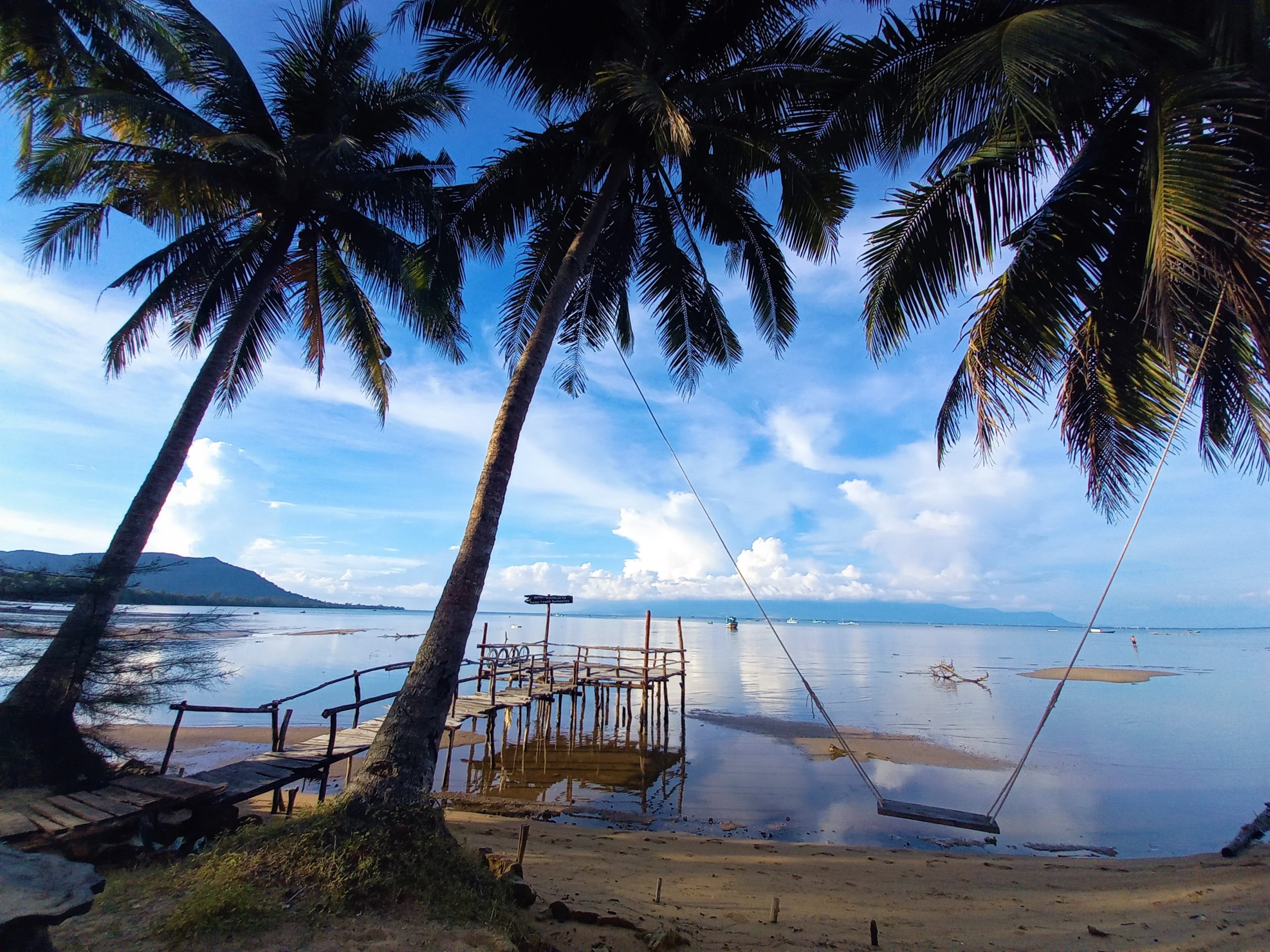
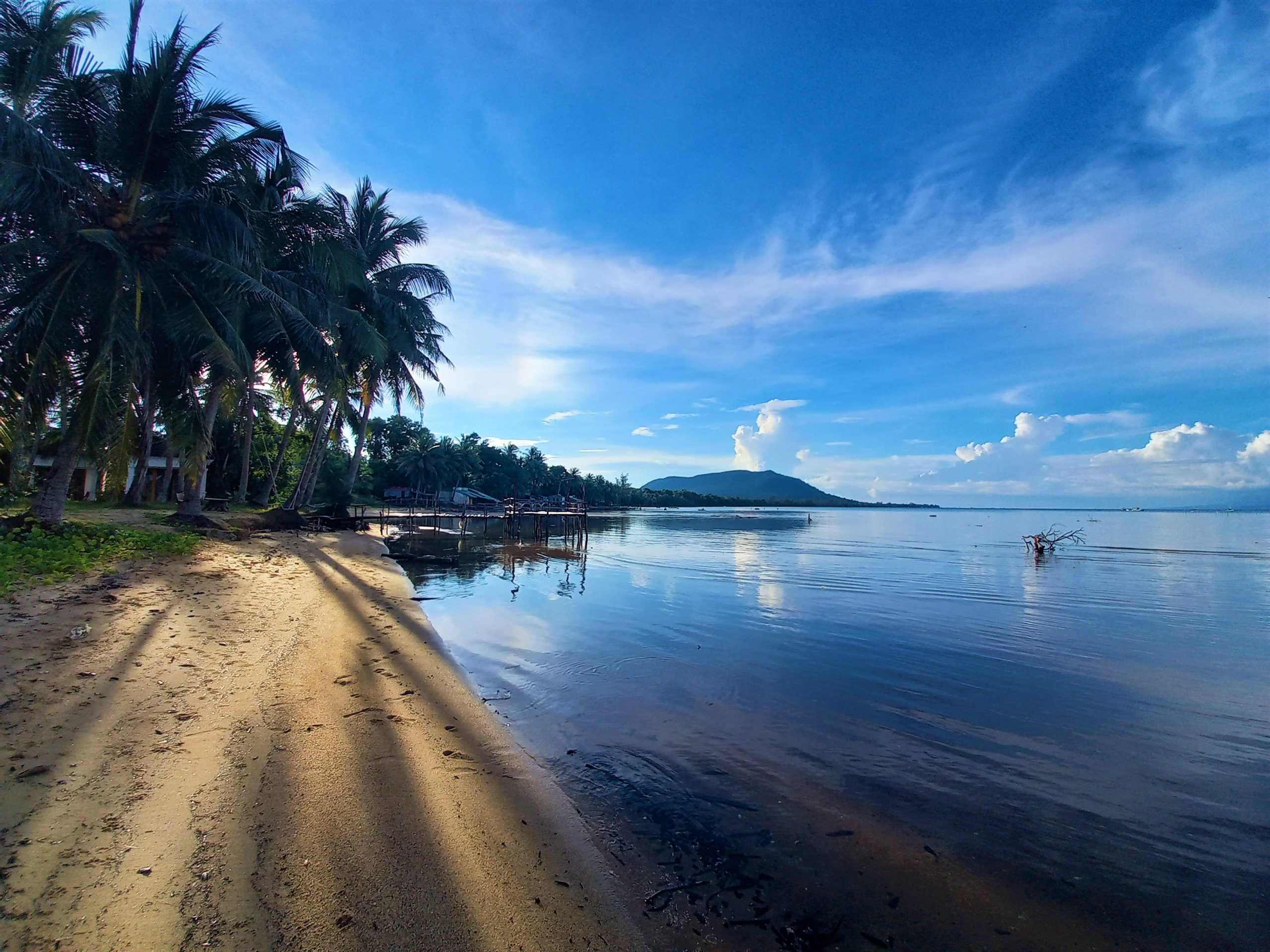
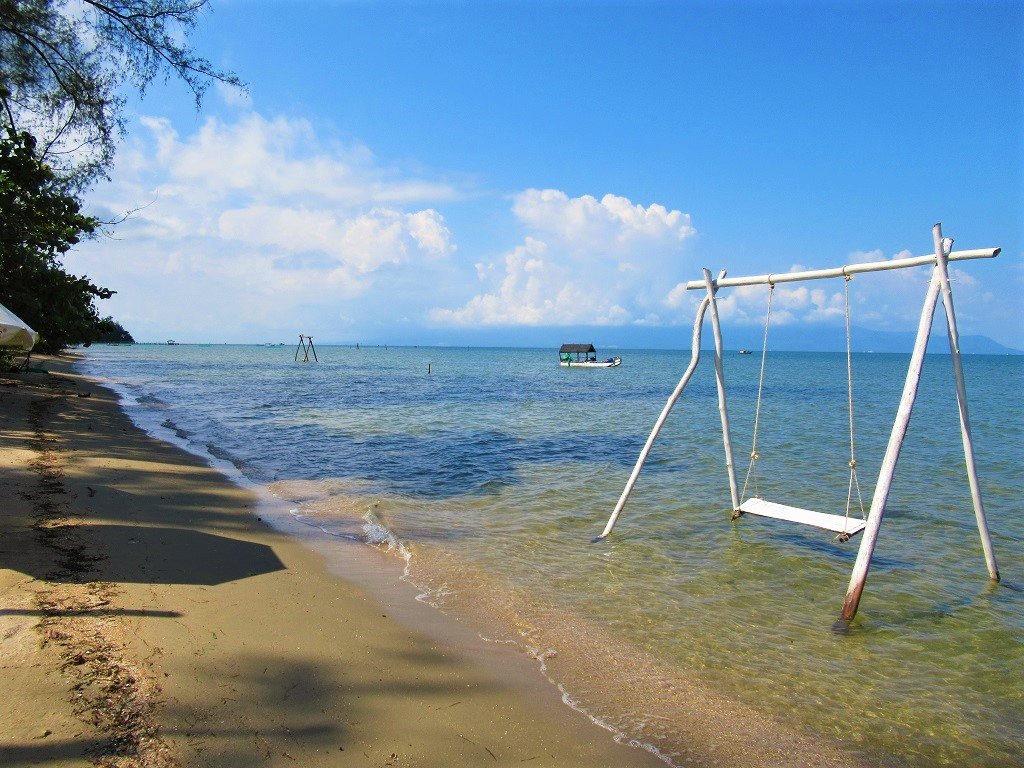


Equipment Check-List:
Below is a brief (far from exhaustive) equipment check-list for camping on Phu Quoc Island. I’ve written this assuming that most travellers will bring their own equipment, but there’s also the possibility of renting a tent somewhere on the island (ask around) and King Kong Mart is a good place to find just about everything else. To a certain extent, the success of your camping trip hinges on how prepared you are. I haven’t covered everything here – just some essentials and optional extras which I personally like having with me. If you’ve camped in other places in Vietnam, you’ll already have the equipment down to an art. It certainly isn’t necessary to have all the modern, trendy camping gadgets and accessories in order to have a highly successful camping trip. In fact, to a certain degree, you can end up making yourself too comfortable if you bring too much equipment; and then it doesn’t really feel like camping anymore. However, having the basics does make all the difference – being too cold at night, for example, is pretty miserable. The following list is rambling and in no particular order (the annotated picture below might also be helpful):

Check-List: Tent or camping hammock (I much prefer the former, but both available to buy in Vietnam; try the FanFan stores in several cities, or hammocks can be found at King Kong Mart on the island), cell phone and local SIM, USB power-bank, flashlight (with extra batteries or a USB-charged flashlight is a good option), cash, a camp stove, firelighters (cồn khô in Vietnamese; available in most local stores), a couple of cigarette lighters, food and snacks (dried and tinned food is easiest, but you can be surprisingly creative when it comes to camping food), big bottles of water (5-6 litre bottles are available in most stores), thermos flasks (for storing boiled water), coffee and tea, your preferred alcoholic drink, socks (underrated camping asset – great for walking around your campsite without getting sandy feet), a mat for sitting on, reading material or a Kindle, long-burning candles (comforting at night, safer, less effort and less attention-drawing than a campfire), mosquito coil and bug spray, guitar/ukulele (optional), cutlery, a good knife, waterproof rain-suit (just in case), sunscreen, toothbrush, towel, GIVI box or bungees for securing your luggage on your motorbike, inflatable sleeping mat or yoga mat (makes all the difference if you actually want to get any sleep), sleeping bag or some kind of covering, wet ‘baby’ tissues (great for cleaning utensils), hand sanitizer, passport, lots of common sense.
Safety & Hazards:
Camping is a lot of fun, but there are several precautions to take and potential hazards to be aware of. Camping is still a fairly niche activity on Phu Quoc and anyone who decides to try it should do so as responsibly as possible. Below are a few things to keep in mind when camping on the island:
- Fires
- Tides
- Trash & Environment
- Personal Safety & Possessions
- Animals & Wildlife
- People & Authorities
- Riding Off-Road
Fires: It should go without saying that if you make a campfire on the beach you need to be extremely careful, especially in the dry season, when everything is crisp, brittle and easy to ignite. At this time of year, the jungles are arid and fire can spread quickly and easily. Be sensible: if you make a campfire, keep it small and under control, and don’t take anything for granted. Sand is great for extinguishing a fire if it gets out of control.

[Back]
Tides: Always check along the beach for signs of the high-tide mark before pitching your tent: if you camp too close to the sea, you might find the water lapping at your tent in the middle of the night and half your campsite washed away. On the northern beaches, the sea recedes by about 5 metres during low-tide, and the east coast experiences an even more dramatic change in water-level.

[Back]
Trash & the Environment: Sadly, litter is a huge problem on Vietnamese beaches and in the ocean, especially ‘casual items’, such as instant noodle packages, soft drink cans, water bottles, candy wrappers, and little sachets of shampoo. The northern beaches on Phu Quoc Island are relatively clean, but still suffer from flotsam and jetsam washed up on the sand. Trash is not only discarded by people living locally but also by travellers: indeed, some of the worst-affected areas in Vietnam are the most-popular tourist destinations, including popular camping spots. Set an example by making sure you leave your campsite spotless. Try to limit the amount of single-use plastic you consume while camping by bringing along items such as flasks, reusable food containers, and a water filter. Any litter you do generate, tie up in a bag and dispose of properly in the nearest town the next day. (I’ve written more about reusable travel items on this page.) When going to the toilet outside, dig a little hole in the ground and cover it up again.
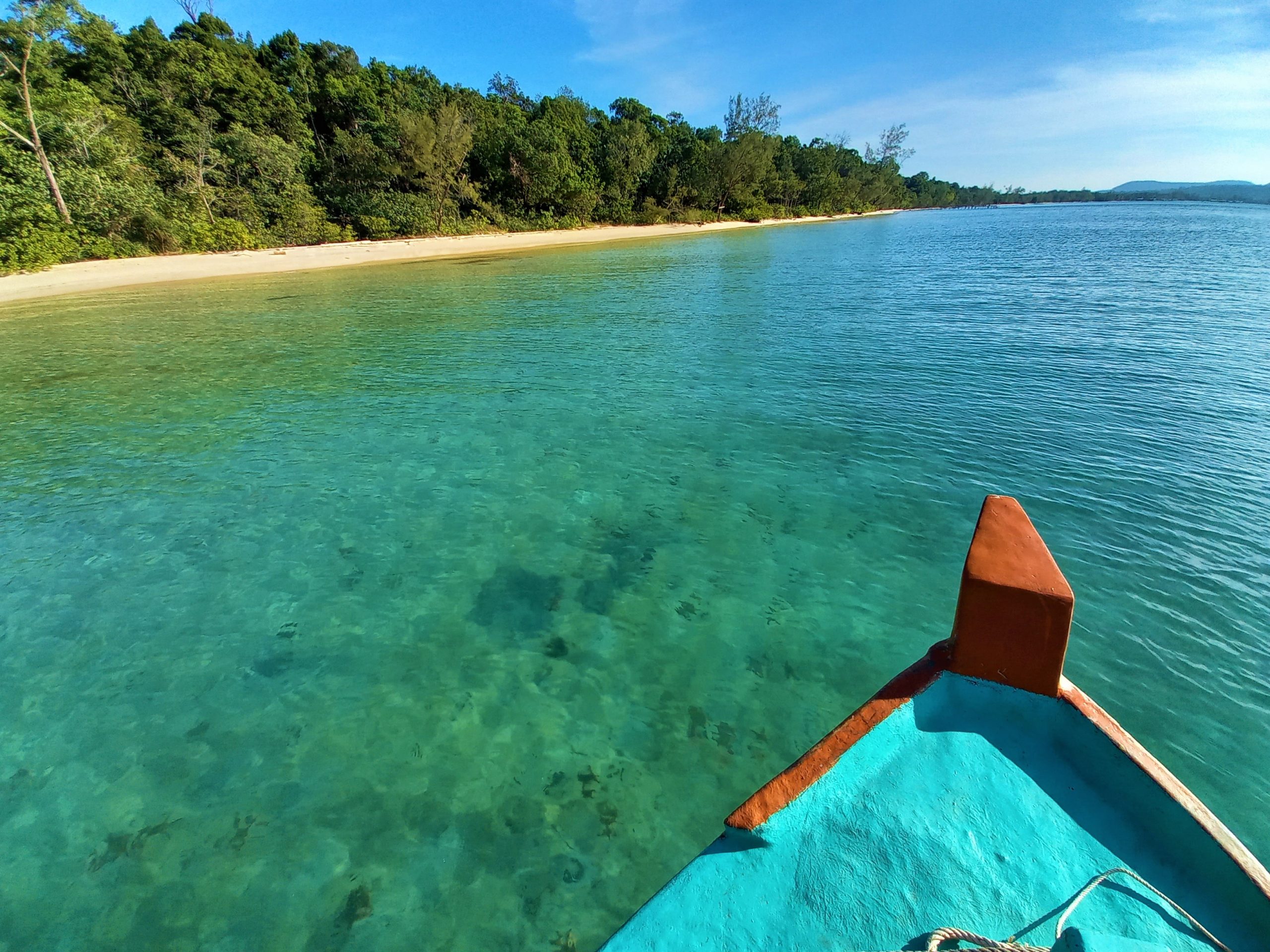
[Back]
Personal Safety & Possessions: Vietnam is generally a very safe country in which to travel. But it’s still wise to be careful with your most valuable possessions. At night, lock the wheel of your motorbike and keep it close to your tent if possible. When you go to sleep, make sure you have all of your most important and valuable possessions with you inside the tent, such as money, passport, phone etc.

[Back]
Animals & Wildlife: Part of the joy of camping is lying in your tent at night, listening to the chorus of animals and insects outside. The only animals you’re likely to encounter are insects and dogs. Even so, don’t leave food outside your tent at night: clean your utensils, stash your food in a container, and tie up your litter in a bag. Snakes and mosquitoes are probably the most dangerous animals on the island, neither of which like fire. Snakes, apparently, don’t like heavy footfall and are unlikely to seek out a place of human activity. (I’ve seen many snakes on Phu Quoc, but none when I’ve camped.) For mosquitoes, burn a coil throughout the evening and night, and bring bug spray if you need it.

[Back]
People & Authorities: I’ve camped dozens of times all over Vietnam: I’ve never been told not to camp and I’ve never had a problem with people or local authorities. However, as a general rule, try not to draw attention to yourself: wild camping is still quite unusual in Vietnam, so anyone who sees a traveller (especially a foreign one) setting up their tent in the middle of nowhere will naturally be curious or even, in some cases, suspicious. Try to be as inconspicuous as possible: it’s best to make sure no one sees you setting up camp and that you aren’t visible from any road, lane or pathway. This is because you don’t want to attract the curiosity of any passersby. If you do encounter anybody, the right thing to do is to ask permission to camp: in almost every situation in my experience, people will be happy to let you (albeit confused as to why you’d want to). And, obviously, pay attention to your surroundings: make sure you’re not camping on someone’s farmland or close to a military post.
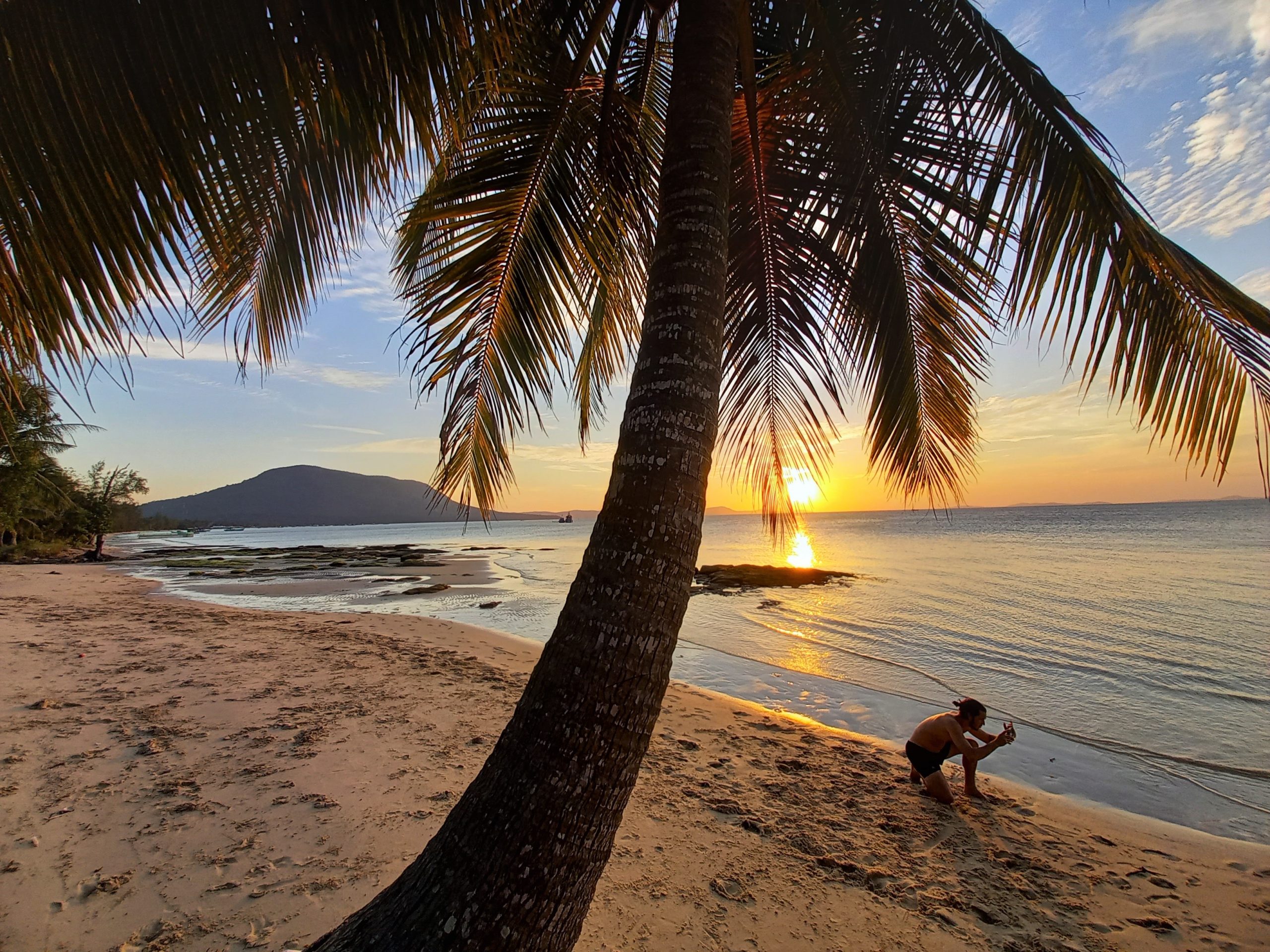
[Back]
Riding Off-Road: In order to reach some of the beaches in this guide, it’s necessary to ride on dirt roads for short distances. Riding off-road can be tough, slow and dangerous if you’re not used to it, or if, like me, your motorbike wasn’t designed for such use. However, with care and patience even an old automatic like my motorbike can do it. Ride slowly and carefully, because punctures and falls are highly likely if you ride recklessly off-road. Also, riding on dirt roads is much easier in the dry season: the same roads when wet can be extremely difficult and treacherous.

*Disclosure: I never receive payment for anything I write: my content is always free and independent. I’ve written this guide because I want to: I like camping on Phu Quoc Island and I want my readers to know about it. For more details, see my Disclosure & Disclaimer statements and my About Page

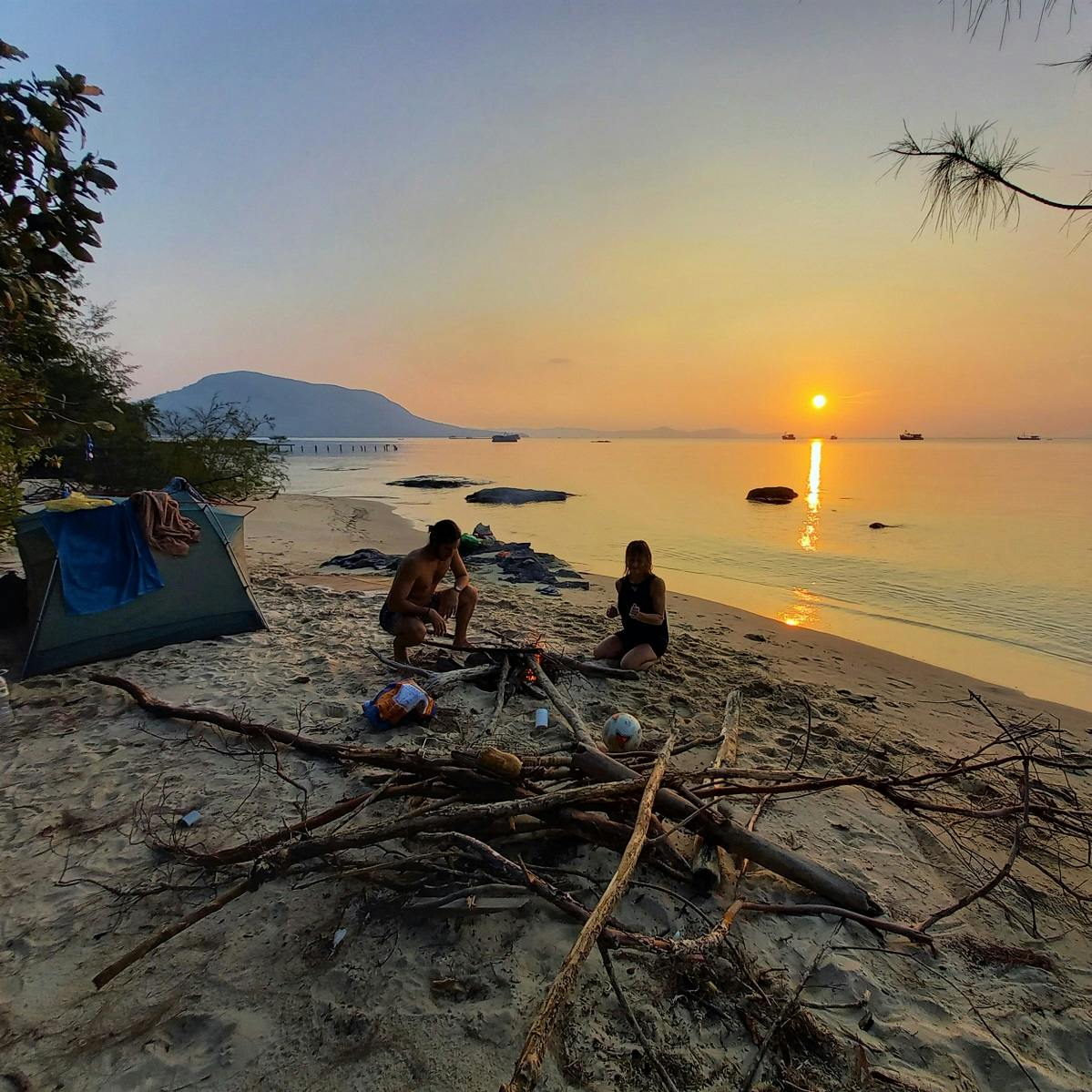
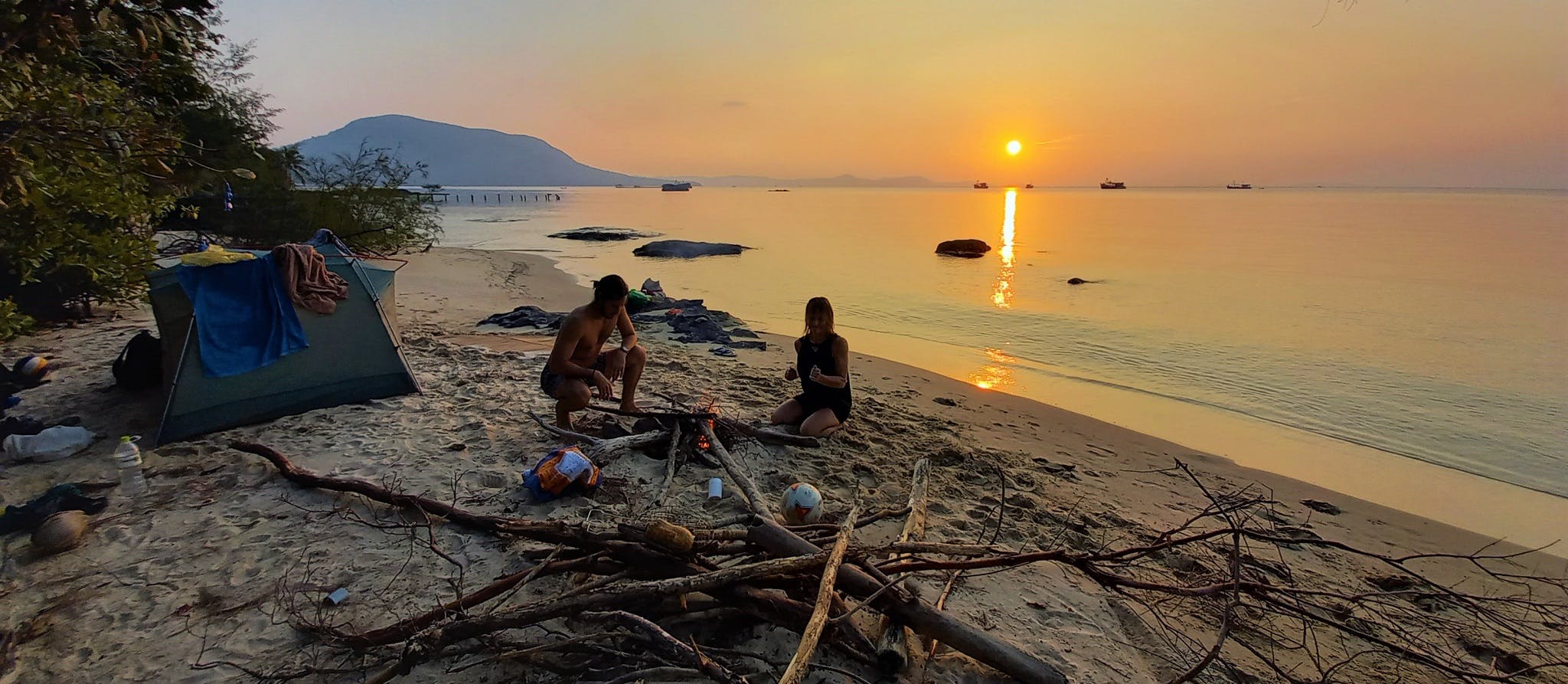

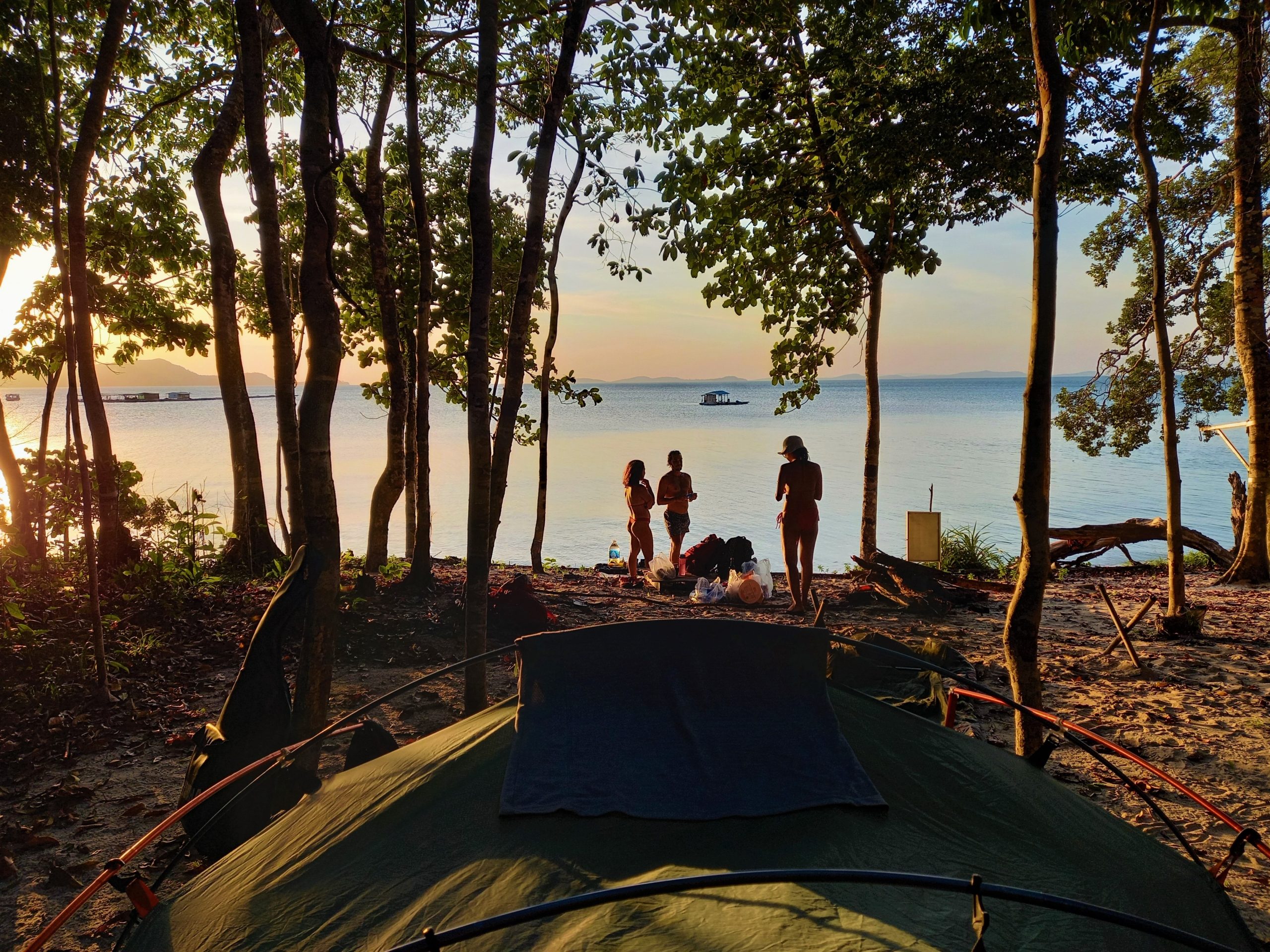
I’ve always wondered if it was possible to camp in Phu Quoc: now I know the answer and I know how to prepare it!
Thanks a lot for this very instructive article Tom 🙂
Thanks, Tom.
I hope you get a chance to try it some time soon.
Tom
Cool article this one. Like usual.
Can’t wait until the visa is available again.
Thanks, Shane.
Let’s hope 2022 will see the return of international travel to Vietnam.
Tom